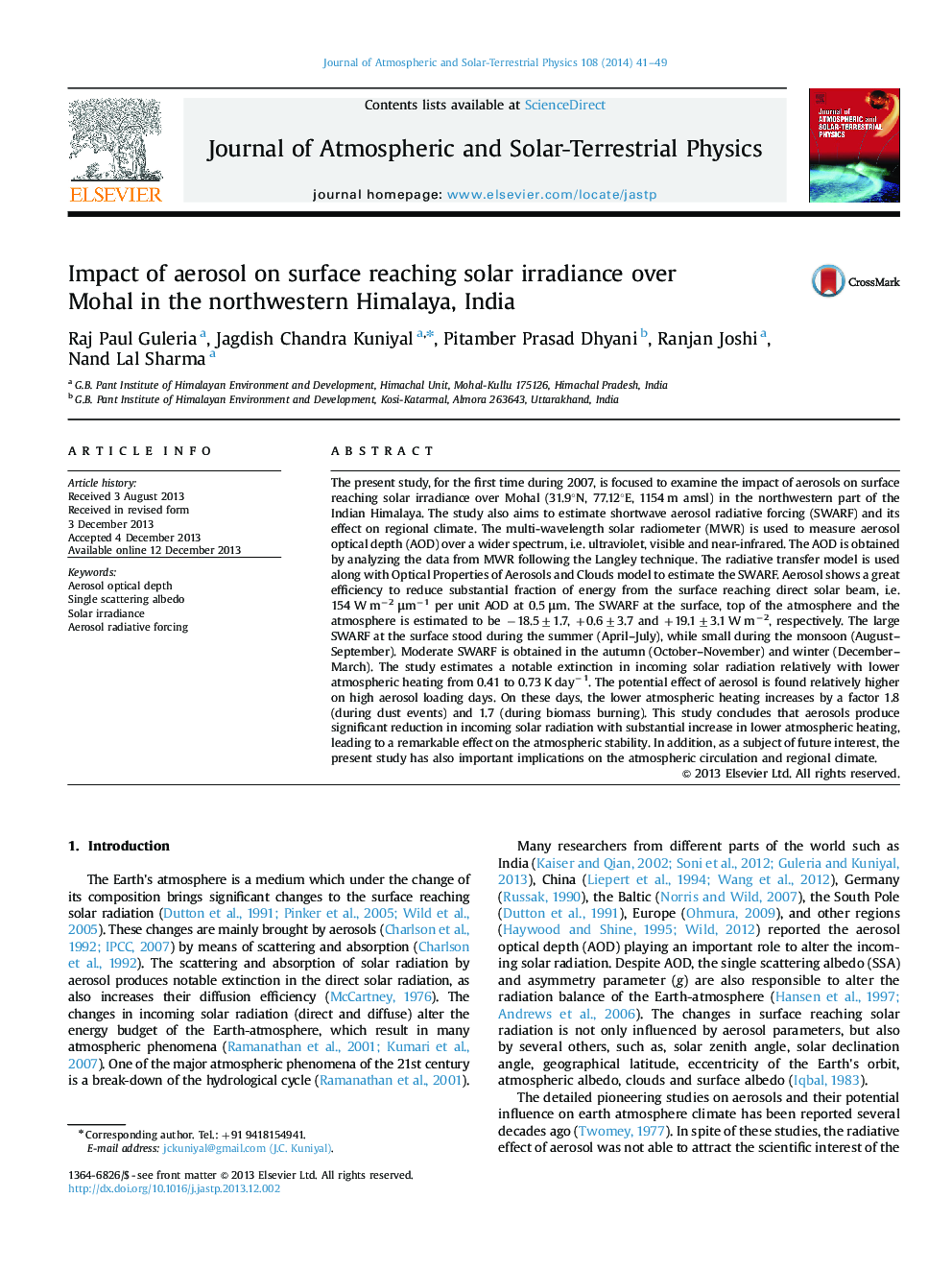| کد مقاله | کد نشریه | سال انتشار | مقاله انگلیسی | نسخه تمام متن |
|---|---|---|---|---|
| 1776698 | 1523630 | 2014 | 9 صفحه PDF | دانلود رایگان |
• Aerosol caused significant loss in incoming solar radiation.
• CALIPSO confirms potential effect of aerosols on incoming solar radiation budget.
• Aerosol heating the atmosphere with the rate of 0.41–0.73 K day−1.
• Study directly supports the hypothesis of “Elevated Heat Pump”.
The present study, for the first time during 2007, is focused to examine the impact of aerosols on surface reaching solar irradiance over Mohal (31.9°N, 77.12°E, 1154 m amsl) in the northwestern part of the Indian Himalaya. The study also aims to estimate shortwave aerosol radiative forcing (SWARF) and its effect on regional climate. The multi-wavelength solar radiometer (MWR) is used to measure aerosol optical depth (AOD) over a wider spectrum, i.e. ultraviolet, visible and near-infrared. The AOD is obtained by analyzing the data from MWR following the Langley technique. The radiative transfer model is used along with Optical Properties of Aerosols and Clouds model to estimate the SWARF. Aerosol shows a great efficiency to reduce substantial fraction of energy from the surface reaching direct solar beam, i.e. 154 W m−2 μm−1 per unit AOD at 0.5 μm. The SWARF at the surface, top of the atmosphere and the atmosphere is estimated to be −18.5±1.7, +0.6±3.7 and +19.1±3.1 W m−2, respectively. The large SWARF at the surface stood during the summer (April–July), while small during the monsoon (August–September). Moderate SWARF is obtained in the autumn (October–November) and winter (December–March). The study estimates a notable extinction in incoming solar radiation relatively with lower atmospheric heating from 0.41 to 0.73 K day−1. The potential effect of aerosol is found relatively higher on high aerosol loading days. On these days, the lower atmospheric heating increases by a factor 1.8 (during dust events) and 1.7 (during biomass burning). This study concludes that aerosols produce significant reduction in incoming solar radiation with substantial increase in lower atmospheric heating, leading to a remarkable effect on the atmospheric stability. In addition, as a subject of future interest, the present study has also important implications on the atmospheric circulation and regional climate.
Journal: Journal of Atmospheric and Solar-Terrestrial Physics - Volume 108, February 2014, Pages 41–49
